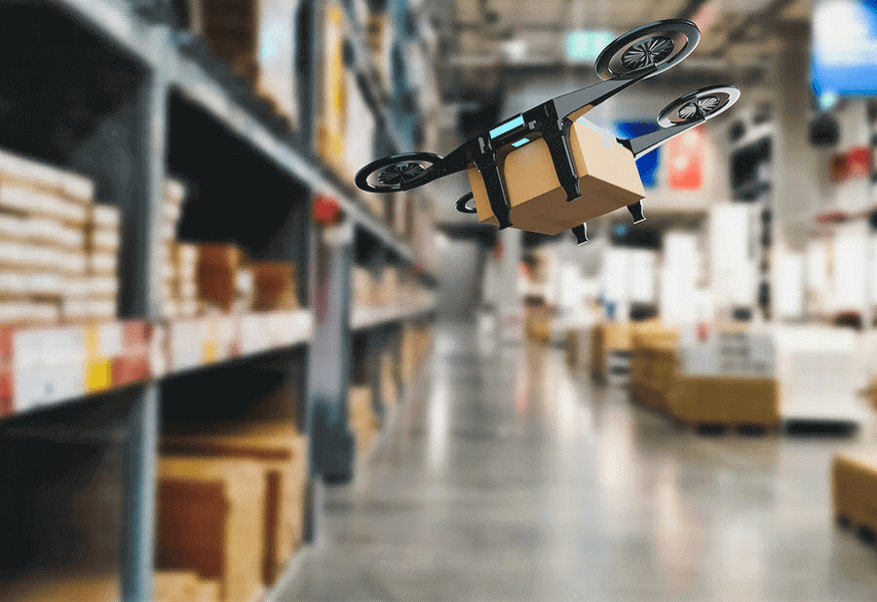Smart technology applies advanced technology of computer, communication, control, and sensing. Objectives for smart technology are to improve traffic safety, relieve traffic congestion, improve transportation efficiency, reduce air pollution, increase energy efficiency, and promote the development of related industries. Intelligent Transport System (ITS) technology makes it possible to use a navigation system to find the best route based on real-time conditions. It also improves freight tracking, inspection, safety, and efficiency for public transportation. Advanced Traffic Management System (ATMS) help detects traffic situation. This article discusses some smart technologies that most organizations can implement for transport operations. All technologies build upon themselves and allowing for innovative approaches as technology evolves.
Table of Contents
Intelligent Transportation System
Intelligent Transportation Systems (ITS), Internet of Things (IoT), and Artificial Intelligence (AI) have been developed by all countries recently. ITS has been widely accepted use in many countries, it is not just limited to traffic control information, but also for road safety and efficient infrastructure usage and aims to achieve traffic efficiency by minimizing traffic problems. IoT is referred to as telematics in logistics and operates on three-level connected hardware infrastructure which facilities data exchange and processing and the software tier. AI is intelligence demonstrated by robots or machines, unlike the naturally displayed by humans and animals, which is involves emotionally and consciously.
Traffic Management Centre (TMC) is a technical system administered by the transportation authority to help collect all data and analyzed it for further operations and control management of the traffic in real-time or information about local vehicles. The data here is collected via varied hardware devices that lay the base of further ITS functions. Drivers in the can use a variety of hardware devices to track their journeys. The data is sent to users at the data collection centre located at the service provider’s location.
Unmanned Aerial Vehicles (UAV) Technology
UAV knows as a drone; it is an aircraft without any human pilot or crew. Which is additionally a ground-based controller and has a system that communicates with UAV. An Unmanned Aerial Vehicle (UAV) is defined as a powered, aerial vehicle that does not carry a human operator. The initialism is increasingly being taken to mean an Unscrewed Aerial Vehicle. This terminology has issues with proposed autonomous aerial taxis. The flight by UAV operates under remote control by humans as Remotely Piloted Aircraft (RPA). The RPA is a software technology that automates low-level task using robots and machine which imitate human action to doing a repetitive task. RPA with various degrees of autonomy, autopilot assistance, and fully autonomous aircraft that have no provision for human interventions.
Autonomous technology enables self-driving vehicles. The driverless truck can be navigating, stay in their line, slow, or stop in response to traffic conditions without intervention. Autonomous drones can carry out missions without the need for human intervention. They use cloud computing, computer vision, artificial intelligence, machine learning, deep learning, and thermal sensors to avoid collisions with other aircraft in the air or on the ground.

Vehicle Tracking for Inventory Movements
Global Positioning System (GPS) is the business idea changed to advance in technology and businesses, nowadays its highly rely on the technology due to multiple advantages. The GPS Tracking Device contains integrated chip modules that communicate with the global navigation satellites to obtain their relative position, latitude, and longitude. The availability and accuracy of the GPS offer increased efficiencies and safety for vehicles using highways, streets, and mass transit systems. A problem associated with the routing and dispatch of commercial vehicles is significantly reduced or eliminated with the help of GPS. GPS enables automatic vehicle location and vehicle navigation systems that are widely used throughout the world. Mass transit systems in the use technology to track trains, buses, and other services to improve on-time performance. The technology could be used for new ways of managing transportation systems. GPS technology is being used to help track and forecast the movement of freight. Trucking companies use GPS for tracking to guarantee delivery and pickup at the time promised.
The full content is only visible to SIPMM members
Already a member? Please Login to continue reading.
References
Gharu Mandeep Singh, DLSM. (2019). “Essential Considerations for Digital Transportation in Logistics Chain”. Retrieved from SIPMM: https://publication.sipmm.edu.sg/essential-considerations-digital-transportation-logistics-chain, accessed 13/6/2021.
Juliana Matsohor, GDSCM. (2017). “The Revolutionary Delivery Drones for Supply Chain Management in Disaster Area”. Retrieved from SIPMM: https://publication.sipmm.edu.sg/the-revolutionary-delivery-drones-for-supply-chain-management-in-disaster-areas/, accessed 12/6/2021.
Karl Lee Ecijan, ADLSM. (2019). “Robotic Process Automation (RPA) for Digital Warehousing”. Retrieved from SIPMM: https://publication.sipmm.edu.sg/robotic-process-automation-rpa-digital-warehousing/, accessed 14/06/2021.
Malvina Ong Moy Geem, ADLSM. (17/07/2019). “Digital Technologies for Fleet Visibility and Responsiveness”. Retrieved from SIPMM: https://publication.sipmm.edu.sg/digital-technologies-fleet-visibility-responsiveness/, accessed 20/6/2021.
Murali Balasubramaniam, DLSM. (2021). “Concatenating RF Technology for Integrated Logistic”. Retrieved from SIPMM: https://publication.sipmm.edu.sg/concatenating-rf-technology-integrated-logistics/, accessed 13/6/2021.
PIARC Org, (2021). “Road Network Operations and Intelligent Transport System”. Retrieved from https://rno-its.piarc.org/en/its-basics-its-technologies-data-and-information/cctv. accessed 13/6/2021, accessed 13/6/2021.
Proposal kit, inc. (2021). “Drone delivery in Disaster Area”. Retrieved from https://www.proposalkit.com/htm/business-proposal-example/sample-business-proposal/drone-delivery-in-disaster-area-sample-proposal, accessed 13/6/2021.
Samsara Org, (30/3/2021). “You need know about fleet management”. Retrieved from https://www.samsara.com/guides/what-is-fleet-management/, accessed 19/06/2021.

